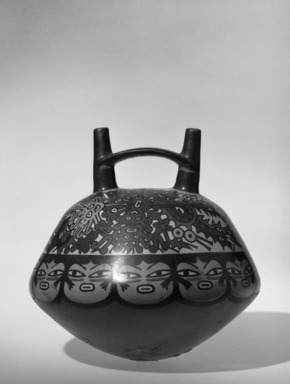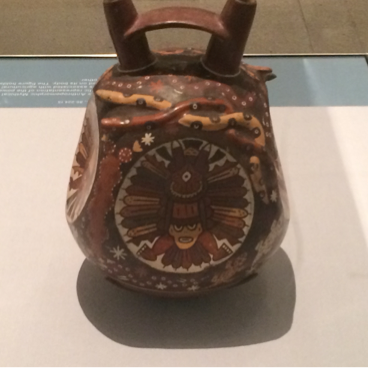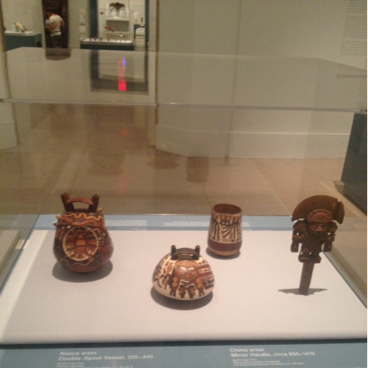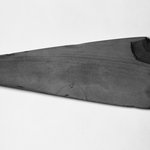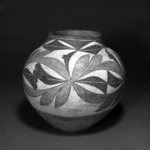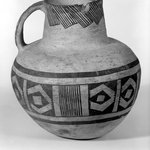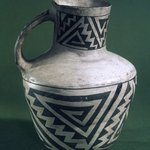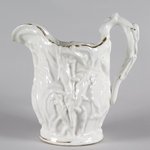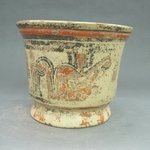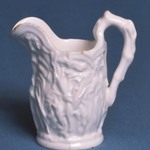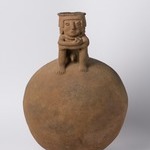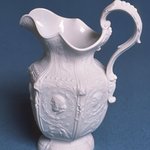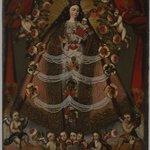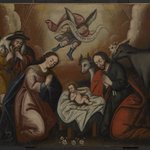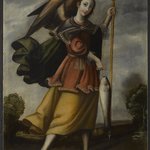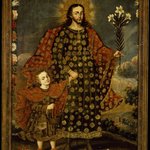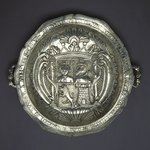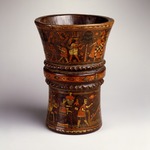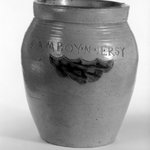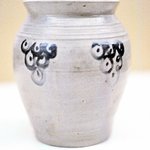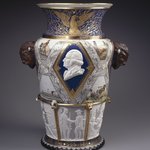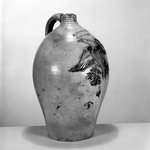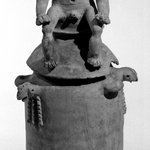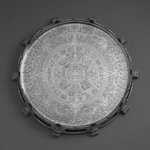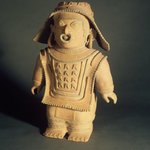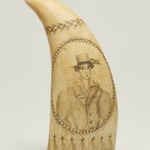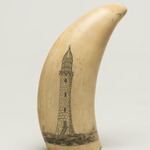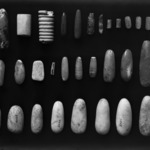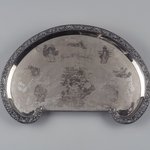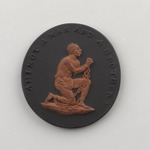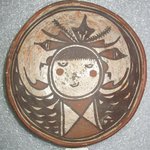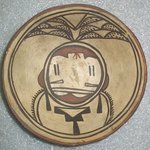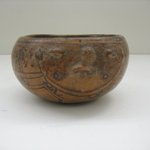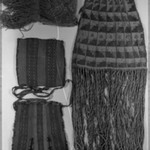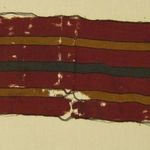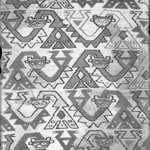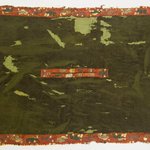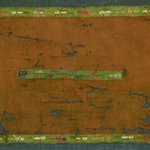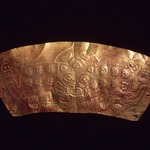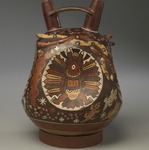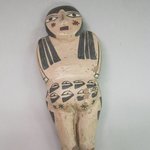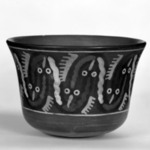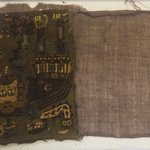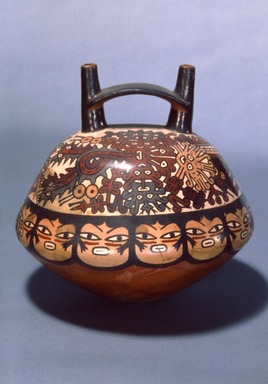

Nasca. Double Spout and Bridge Bottle, circa 600 C.E. Ceramic, pigment, 8 x 8 x 8 in. (20.3 x 20.3 x 20.3 cm). Brooklyn Museum, Henry L. Batterman Fund, 41.426. Creative Commons-BY (Photo: Brooklyn Museum, 41.426.jpg)
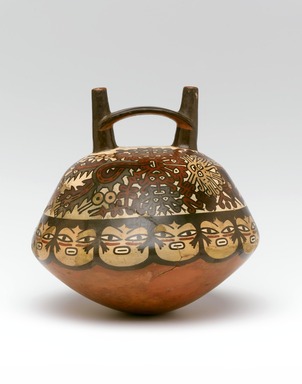
Nasca. Double Spout and Bridge Bottle, circa 600 C.E. Ceramic, pigment, 8 x 8 x 8 in. (20.3 x 20.3 x 20.3 cm). Brooklyn Museum, Henry L. Batterman Fund, 41.426. Creative Commons-BY (Photo: Brooklyn Museum, 41.426_front_PS1.jpg)
Double Spout and Bridge Bottle
Arts of the Americas
The ancient Nasca culture, centered on the south coast of Peru, was known for its fine polychrome pottery. In this desert-like region, the Nasca produced imagery that often related to the worship of supernatural beings who assured agricultural success. The highly abstract mythological figures that appear on the upper register of this bottle are most likely connected to these religious beliefs. The band of faces on the lower register may represent women or, alternatively, warriors with face painting under their eyes.
CULTURE
Nasca
MEDIUM
Ceramic, pigment
DATES
circa 600 C.E.
PERIOD
Nasca Phase 6
DIMENSIONS
8 x 8 x 8 in. (20.3 x 20.3 x 20.3 cm) (show scale)



COLLECTIONS
Arts of the Americas
ACCESSION NUMBER
41.426
CREDIT LINE
Henry L. Batterman Fund
CATALOGUE DESCRIPTION
Ceramic vessel with double spouts joined by a bridge handle. Its rounded bottom converges to an almost flat top on which two tapered spouts sit, joined by a convex bridge handle. The reddish clay has painted decoration in red, reddish brown, black, grey, white, and yellow ochre. The upper half of the vase has two masked supernatural figures in killer-whale aspect because of long body with serpent-like figures emanating from their bodies vividly painted on a white background. The beings wear gold mouth masks and diadems. Encircling the vase below these creatures is a band of girl faces. The lower section of the vessel is undecorated.
Condition; good; some surface abrasions.
MUSEUM LOCATION
This item is not on view
CAPTION
Nasca. Double Spout and Bridge Bottle, circa 600 C.E. Ceramic, pigment, 8 x 8 x 8 in. (20.3 x 20.3 x 20.3 cm). Brooklyn Museum, Henry L. Batterman Fund, 41.426. Creative Commons-BY (Photo: Brooklyn Museum, 41.426.jpg)
IMAGE
overall, 41.426.jpg. Brooklyn Museum photograph
"CUR" at the beginning of an image file name means that the image was created by a curatorial staff member. These study images may be digital point-and-shoot photographs, when we don\'t yet have high-quality studio photography, or they may be scans of older negatives, slides, or photographic prints, providing historical documentation of the object.
RIGHTS STATEMENT
Creative Commons-BY
You may download and use Brooklyn Museum images of this three-dimensional work in accordance with a Creative Commons license. Fair use, as understood under the United States Copyright Act, may also apply.
Please include caption information from this page and credit the Brooklyn Museum. If you need a high resolution file, please fill out our online application form (charges apply).
For further information about copyright, we recommend resources at the United States Library of Congress, Cornell University, Copyright and Cultural Institutions: Guidelines for U.S. Libraries, Archives, and Museums, and Copyright Watch.
For more information about the Museum's rights project, including how rights types are assigned, please see our blog posts on copyright.
If you have any information regarding this work and rights to it, please contact copyright@brooklynmuseum.org.
RECORD COMPLETENESS
Not every record you will find here is complete. More information is available for some works than for others, and some entries have been updated more recently. Records are frequently reviewed and revised, and we welcome any additional information you might have.

